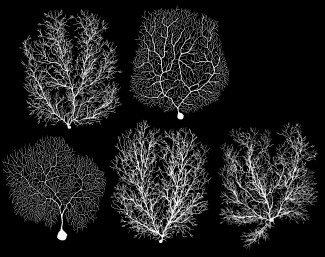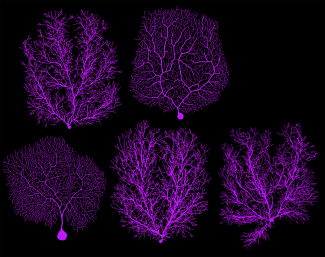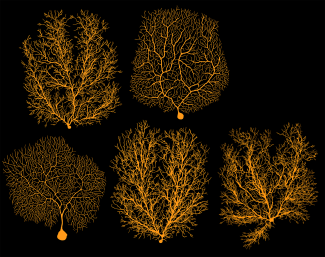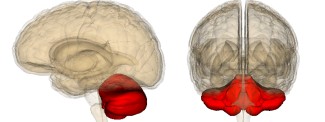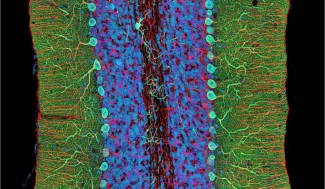Ataxias (a term for a group of disorders, from the Greek ‘lack of order’), also known as cerebellar syndromes, are a group of neurodegenerative pathologies of the cerebellum and/or brain stem that present as a lack of voluntary coordination of muscle movements (without muscle weakness), balance problems and some eye problems. Ataxias affect around 1 in every 10,000 people (or around 10,000 people) in France and in most European countries.
These disorders are caused by malfunctions in neuronal transmission in the cerebellum and in the nerve bundles connected to it. The cerebellum is the part of the brain responsible for coordinating voluntary movements. The first sign of ataxia is often a loss of balance, which progresses steadily to become coordination problems that affect walking, gait, speech and eye movements.
A distinction is made between genetic origin ataxias, which affect both sides of the body and progress slowly, and acquired ataxias, which occur suddenly after sudden brain injury. Acquired ataxias can be caused by a tumour, an aneurysm rupture or a brain infection, but also by alcohol abuse or chemical poisoning. There are also congenital ataxias caused by developmental malformations of the brain.
There are several forms of ataxia, including:
- Acquired ataxia resulting from trauma, infection or pathology that may affect the central nervous system
- Cerebellar ataxia of genetic origin.
Genetically derived cerebellar ataxia generally includes:
- Autosomally dominant ataxia
- Autosomal recessive ataxia, including:
- early onset ataxia
- Friedreich’s Ataxia
- Telangiectatic ataxia
Biological mechanisms and causes of ataxias
Ataxias are not caused by muscle weakness, but by malfunctioning in the central nervous system. Cerebellar ataxias occur when the cerebellum is damaged; while sensory ataxias indicate damage to the spinal cord. There are also ataxias known as vestibular ataxias. Ataxias can be genetic in origin, resulting from gene mutations (more than 50 mutations are known to date), or can be sudden onset ataxias caused by damage to the brain or the spinal cord. To find out more about the causes of ataxias, visit our dedicated page.
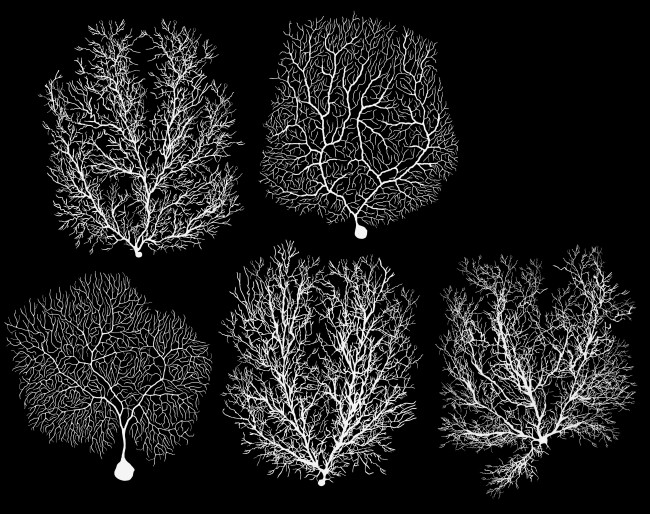
Ataxia symptoms and diagnosis
Symptoms of cerebellar ataxias include a loss of coordination, with apraxia preventing patients from controlling their limbs and posture. Depending on the type of ataxia, there may also be dysmetria (loss of control over range of voluntary movements), dysarthria (loss of control of speech and words), nystagmus (loss of control over eye movements) and patients may experience tremors.
Ataxia is diagnosed in a clinical examination that may involve brain imaging, electrophysiology tests and genetic analysis, in familial cases.

Treatments for ataxias
There is not yet any approved treatment for genetic cerebellar ataxias, but physiotherapy, occupational therapy and speech therapy can relieve symptoms.
Acquired ataxias can be treated based on their cause – whether toxic, inflammatory or from injury. For an ataxia caused by a brain tumour, for example, chemotherapy or surgery to remove the tumour will reduce or even eliminate the symptoms of ataxia.
Support Paris Brain Institute
Did you like this content and did it answer the questions you were asking? Don't hesitate to support Paris Brain Institute.

